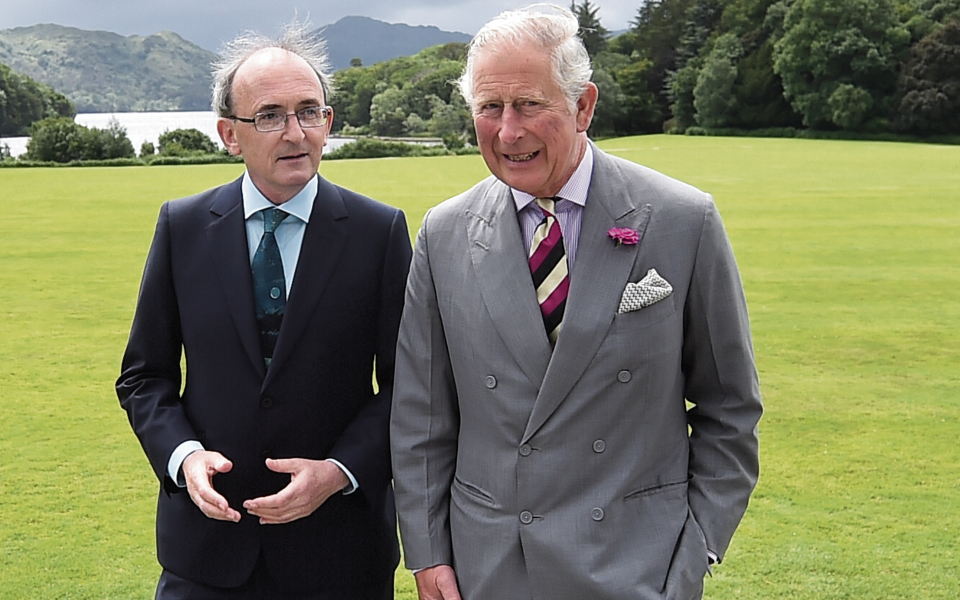Charles III: Why he Britain’s King of Style

The man we had known for decades as Prince Charles is a stalwart of “best dressed” lists. Now King Charles III, he has played a strong sartorial game in this solemn week, from the dress uniform of a field marshal to his immaculate (but venerable) morning dress. The new monarch has needed an outfit for every occasion, and he has never disappointed.
Charles III has had decades of practice to get formal wear absolutely right, of course. As Prince of Wales for more than 50 years, he was forever on show, but he developed a kind of uniform which was distinctive and timeless. Usually in double-breasted suits by Anderson and Sheppard of Savile Row, he often sported the check which bore his title (though it had first been worn by Edward VII as Prince of Wales). A regimental tie and a silk handkerchief would set it off perfectly.
He has also often worn buttonholes of various flowers: a Cornish hellebore for his wedding to the new Queen, a fuchsia for the christenings of his grandchildren and — his floral favourite — a delphinium. Coordinating the triptych of tie, pocket square and boutonnière is not easy, but somehow he manages always to look elegant without ever seeming mismatched or busy.
An important strand of the King’s look has been timelessness. By paying no heed to temporary fashions, he has never seemed to miss the mood: one cannot fail to grasp what one has never sought. If it is true that his hair has been parted in the same way for 70 years, it speaks of a steady devotion to a style that works and is always appropriate. As he himself put it at a fashion event in 2012: “I have lurched from being the best-dressed man to being the worst-dressed man. Meanwhile, I have gone on — like a stopped clock — and my time comes around every 25 years.”

Keeping up appearances requires effort. He is said to have a dressing room which resembles a tailor’s shop, and changes outfits (out of necessity rather than some kind of diva-like quest for novelty) four or five times a day. And the King has a keen, perhaps obsessive eye for detail which allows him to keep his accessories under control. The cufflinks with which he famously fiddles are no accident.
He has also quietly flown the flag for “investment” pieces for many years. His morning coat — eagle eyes will have observed the robbined braiding around the lapels and cuffs — is decades old, as is his dinner jacket. Well cut and well cared for, they, like many items of formalwear, do not age. The King also has a tweed coat that belonged to his grandfather, George VI, but is still providing royal warmth and shelter. Modern influencers may dazzle their followers by recycling venerable pieces, but it has long been standard practice at Clarence House.
Once the solemnly frantic activity of Her late Majesty’s obsequies has passed and the King has settled into his new role, British tailoring should remind itself what a strong ambassador it has in Charles Windsor. Although the new monarch is 73, his schedule will be busy, and there will be an outfit for every occasion. Those already in possession of his royal warrant — Barbour, Gieves and Hawkes, Lock and Co, John Lobb — can expect even greater visibility, and we know that His Majesty is a creature of habit. But high-quality tailoring and accessories in this country exist in a delicate ecosystem, from Savile Row through Jermyn Street to the shoemakers of Northamptonshire, and they know how to cooperate and coordinate. This should be a rising tide which can lift all boats.
A constitutional monarch is always a powerful ambassador: indeed, it is one of the primary roles of the crown, shorn of real political influence. So it should be with Charles III. He cares about the clothes he wears and demands not only quality but endurance. These are virtues which are in line with the times, so let us all shout about them. Buy British — we have the best-dressed king in the world.